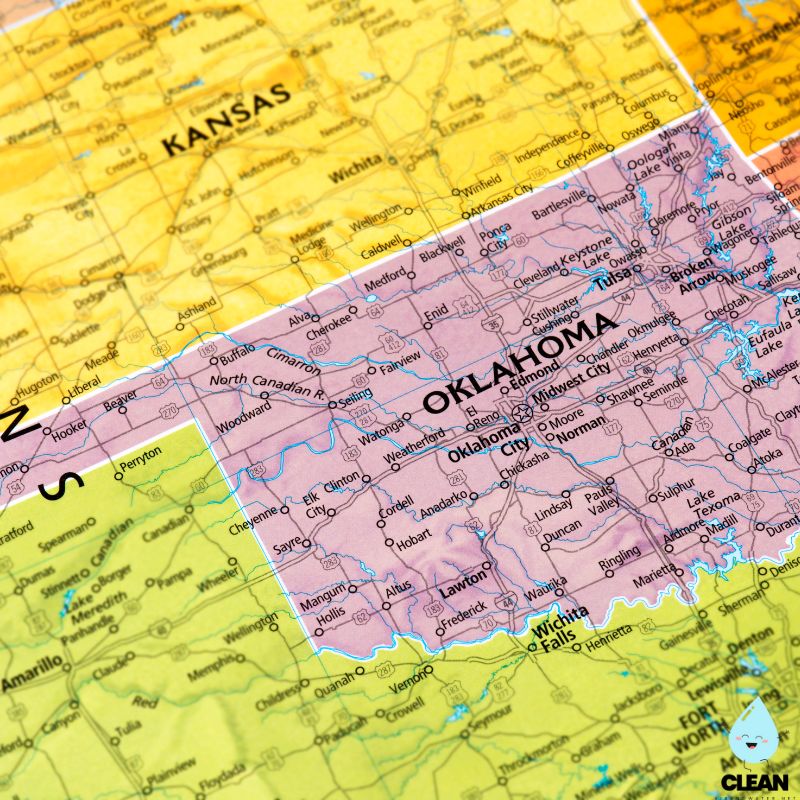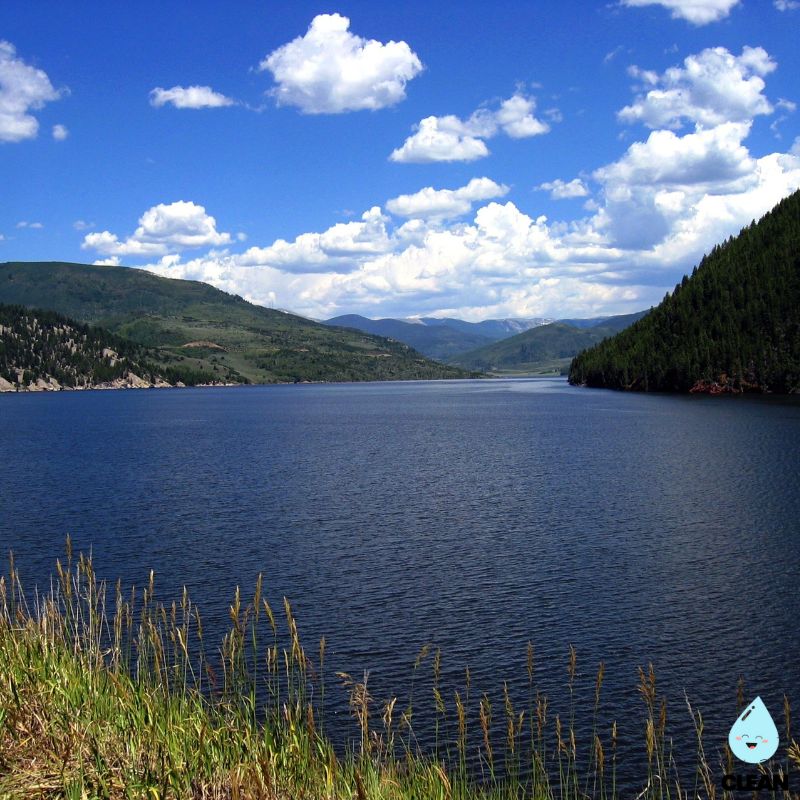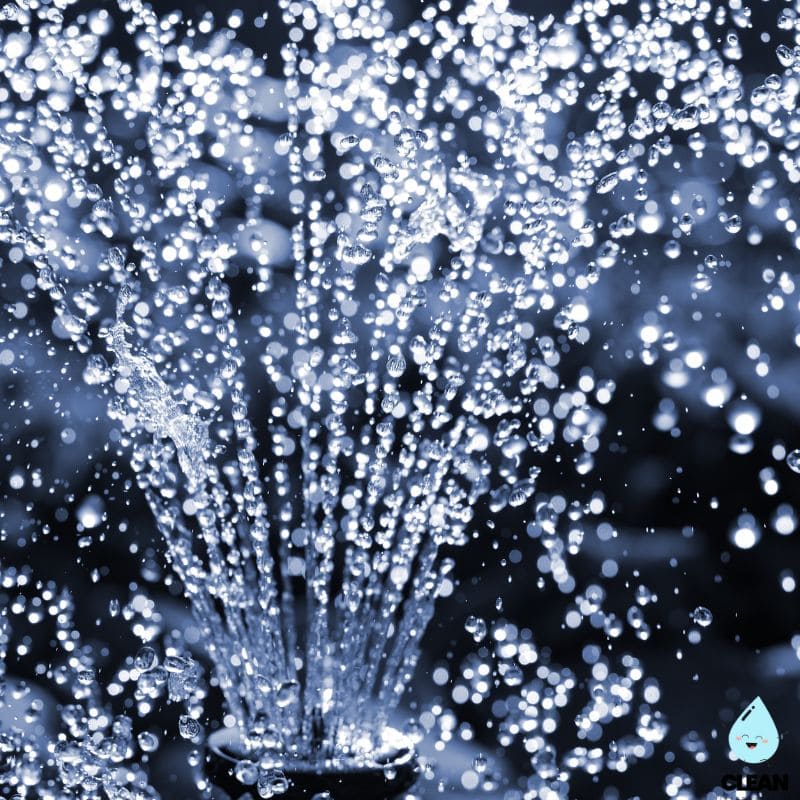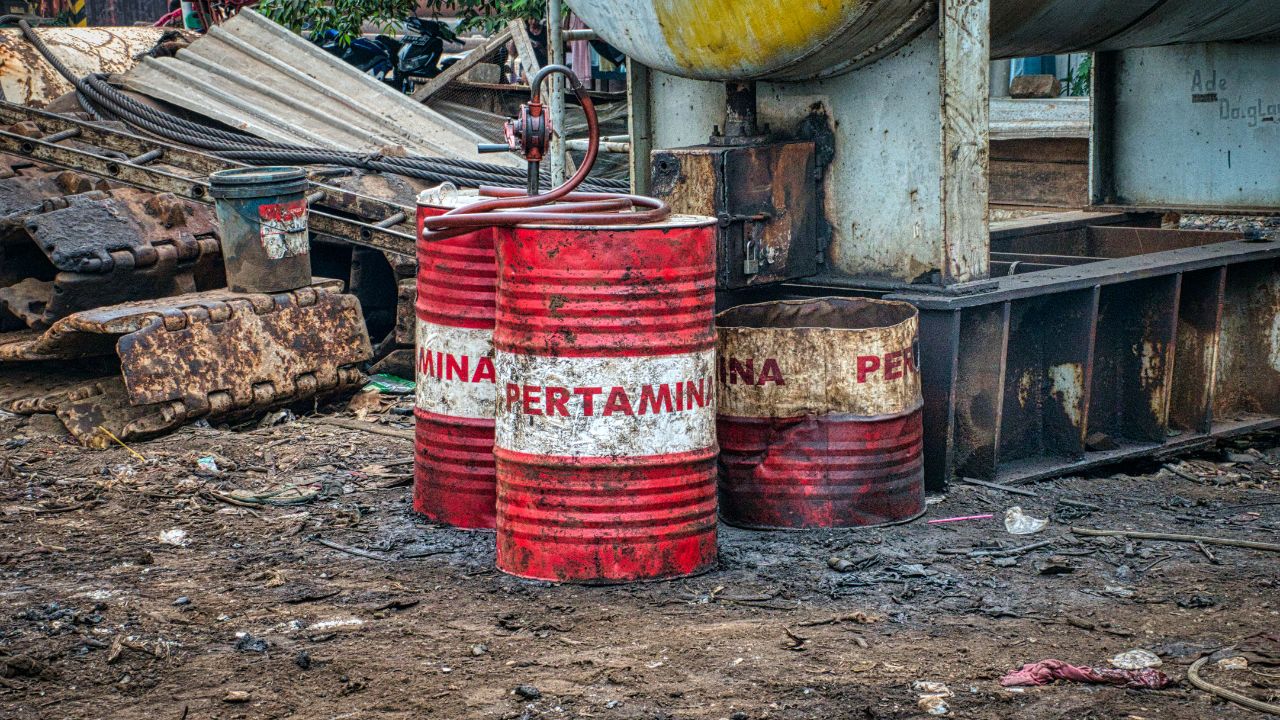Oklahoma Water Quality at a Glance
generally good quality
Is Oklahoma Water Safe to Drink?
Generally Safe and Compliant – Oklahoma water systems meet federal standards with most having zero violations. Key concerns include PFAS detection in 9 public water systems, particularly in Edmond’s Lake Arcadia (6.4 ppt PFOS), and disinfection byproducts like trihalomethanes in major cities. Oklahoma City’s water exceeds EWG guidelines for disinfection byproducts by 300+ times despite meeting EPA limits. Rural areas show fewer violations than urban counties.
⚠️ Key Concerns for Oklahoma Residents
- PFAS “Forever Chemicals”: 9 public water systems exceed EPA limits; Edmond’s Lake Arcadia at 6.4 ppt PFOS (limit: 4 ppt); 12 military sites with known contamination
- Disinfection Byproducts: Trihalomethanes and haloacetic acids from water treatment processes exceed health guidelines in major cities by 300+ times
- Agricultural Runoff: Nitrates and pesticides from farming activities affecting groundwater; 37% of groundwater may exceed safety benchmarks in some areas
- Regional Disparities: Urban counties show more violations than rural areas; Nowata and Broken Arrow detected PFAS above detection levels
Read the full report below for detailed analysis, state-specific data, and actionable recommendations for Oklahoma residents.
Oklahoma – The Sooner State – Water Quality Report 2025: PFAS Testing, Infrastructure Concerns & Safety across your state
Oklahoma’s water infrastructure serves approximately 4.1 million residents across diverse geographical regions, from the Great Plains in the west to the Ozark foothills in the east. The state operates through a complex network of over 1,300 public water systems, ranging from large municipal utilities like Oklahoma City Utilities Department, which serves over 1.4 million customers across 17 communities, to smaller rural systems providing essential services to underserved areas. Oklahoma’s water sources include the Arkansas, Red, and Canadian river systems, along with numerous reservoirs and extensive groundwater aquifers with 22 major groundwater basins containing roughly 390 million acre-feet of water storage.
Despite abundant water resources, Oklahoma faces significant infrastructure challenges. According to recent infrastructure assessments, Oklahoma’s drinking water infrastructure needs are estimated at $6.9 billion, highlighting aging systems, funding shortfalls, and emerging contaminant concerns including PFAS “forever chemicals.” The state has received substantial federal infrastructure investments from the Biden-Harris Administration’s Bipartisan Infrastructure Law to address these challenges, focusing on drinking water safety, wastewater treatment upgrades, and emerging contaminant removal. Oklahoma’s commitment to water quality improvement is demonstrated through partnerships between the Oklahoma Department of Environmental Quality (DEQ), local utilities, and federal agencies working to ensure safe, reliable water access for all residents.

Oklahoma Water Quality: Current Status (2024-2025)
Statewide Compliance and Testing
- Overall Compliance: The majority of Oklahoma’s 1,300+ public water systems meet federal Safe Drinking Water Act standards, with over 90% of tap water meeting water quality standards. Oklahoma City Utilities reported zero drinking water violations in 2024, and major systems generally maintain strong compliance records.
- PFAS Monitoring: Oklahoma has detected PFAS at 39 public water systems statewide, with 9 systems exceeding new EPA limits of 4 parts per trillion. Additionally, 12 military installations show known PFAS contamination, particularly affecting northeastern Oklahoma communities.
- Infrastructure Investment: Federal funding through the Bipartisan Infrastructure Law has been allocated to Oklahoma for water infrastructure improvements, including funds specifically for emerging contaminant treatment and disadvantaged communities, though exact amounts vary by program year.
Major Water Sources and Challenges
- Surface Water Systems: Oklahoma City draws from five primary surface water reservoirs (Lake Stanley Draper, Lake Hefner, Canton Lake, Atoka Reservoir, and McGee Creek Reservoir), with comprehensive treatment at two major facilities processing up to 40 billion gallons annually.
- Groundwater Resources: Twenty-two major groundwater basins provide roughly 390 million acre-feet of water storage, with only half considered recoverable. Groundwater is the primary source for the western half of the state and serves over 90% of rural water systems.
- Infrastructure Challenges: The state faces an estimated $6.9 billion in drinking water infrastructure needs, with aging systems requiring modernization to handle emerging contaminants and meet current safety standards.
Emerging Contaminant Response
- PFAS Regulation Implementation: New EPA drinking water standards for PFOA and PFOS (4 parts per trillion) require water systems to begin initial monitoring by 2027 and achieve compliance by 2029, with treatment implementation as needed for systems exceeding limits.
- State Legislative Response: Oklahoma lawmakers filed Senate Bills 268 and 271 in 2025 to address PFAS contamination, including restrictions on biosolids use and enhanced monitoring requirements for agricultural and wastewater applications.
- Oklahoma City Leadership: As the state’s largest water provider, Oklahoma City Utilities has proactively begun PFAS testing, reporting all regulated PFAS results below 4 ppt detection limits in initial monitoring while implementing comprehensive testing protocols.
Rural and Disadvantaged Communities
- Infrastructure Disparities: Rural water systems face unique challenges with aging infrastructure and limited technical capacity, though Oklahoma State University studies show rural counties tend to have lower violation counts compared to urban areas.
- Targeted Federal Support: Dedicated funding streams through the Clean Water and Drinking Water State Revolving Funds provide grants and low-interest loans to ensure equitable access to safe drinking water, particularly for disadvantaged communities.
- Technical Assistance Programs: DEQ and EPA provide enhanced technical support to help smaller systems navigate complex regulatory requirements and secure funding for necessary improvements, including PFAS treatment technologies.
Looking Forward: 2025-2030
Oklahoma’s water quality landscape is entering a period of significant change as utilities prepare for new federal PFAS regulations taking effect by 2029. The state’s proactive legislative approach to addressing emerging contaminants, combined with federal infrastructure investments, positions Oklahoma to effectively meet these challenges. However, successful implementation will require continued collaboration between state regulators, water utilities, and communities to ensure that all Oklahomans have access to safe, affordable drinking water while addressing the diverse needs of both urban centers and rural communities across the state’s varied geography.
Recommendations for Oklahoma Residents

Know Your Water Source
Contact your water utility to request annual water quality reports (Consumer Confidence Reports) and ask about PFAS testing results. Visit the Oklahoma Department of Environmental Quality’s Drinking Water Watch website to access your local system’s testing data and understand any contaminants of concern in your area.

Support Infrastructure Investment
Stay informed about local water infrastructure needs and support utility rate structures that enable necessary improvements. Attend public meetings when utilities discuss infrastructure upgrades and PFAS treatment investments to understand compliance timelines and costs.

Consider PFAS-Certified Filtration
For areas with known PFAS contamination (like Edmond, Nowata, and Broken Arrow), consider NSF-certified activated carbon or reverse osmosis filters specifically tested for PFAS removal to achieve 99.99% reduction. These provide additional protection while utilities implement treatment upgrades.

Report Water Quality Concerns
Contact your local water utility immediately for taste, odor, or color concerns. Report suspected contamination to DEQ’s Environmental Complaints and Local Services Division at (405) 702-8100 for investigation and follow-up.

Practice Water Conservation
Support Oklahoma’s water sustainability by implementing conservation measures like efficient irrigation, rainwater harvesting, and low-flow fixtures. Reducing demand helps utilities maintain system reliability and affordability while managing the state’s 22 groundwater basins.
Oklahoma Cities We Cover
Oklahoma City Water Quality
Comprehensive analysis of Oklahoma City Utilities Department, the state’s largest water provider serving over 1.4 million customers across 17 communities. Includes information on five primary water sources, advanced treatment processes, infrastructure modernization, and proactive PFAS monitoring showing compliance with new EPA standards.
Frequently Asked Questions
Is Oklahoma’s tap water safe to drink?
Most of Oklahoma’s 1,300+ public water systems meet federal drinking water standards and are generally safe for consumption. Over 90% of tap water meets water quality standards, with major utilities like Oklahoma City reporting zero violations in 2024.
The Oklahoma Department of Environmental Quality requires comprehensive testing across all public water systems. While 9 systems have detected PFAS levels above new EPA limits, most systems currently meet all federal standards. Water utilities are implementing advanced treatment technologies and the state has received substantial federal infrastructure funding to address emerging contaminants. Residents should review their utility’s annual Consumer Confidence Report and stay informed about local conditions, particularly in areas like Edmond where PFAS levels exceed new EPA standards.
What are PFAS chemicals and why are they a concern in Oklahoma?
PFAS (per- and polyfluoroalkyl substances) are synthetic “forever chemicals” that don’t break down naturally in the environment or human body, accumulating over time.
Oklahoma has detected PFAS at 39 public water systems statewide, with 9 systems exceeding new EPA limits and 12 military installations showing known contamination. Notable examples include Edmond’s Lake Arcadia testing at 6.4 ppt PFOS (EPA limit: 4 ppt). These chemicals have been linked to cancer, liver damage, immune system effects, and other health concerns. The EPA finalized new drinking water standards in 2024 limiting PFOA and PFOS to 4 parts per trillion, requiring water systems to comply by 2029. Oklahoma lawmakers have filed legislation to address PFAS contamination through enhanced monitoring and source control.
How can I find out about my local water quality?
Oklahoma residents can access comprehensive water quality information through several resources:
• Annual Water Quality Reports: Contact your water utility directly for their Consumer Confidence Report, which details all testing results and any violations or concerns
• DEQ Drinking Water Watch: Visit the Oklahoma Department of Environmental Quality’s online database to access testing results and compliance information for your local water system
• PFAS Testing Data: DEQ requires public water systems to test for PFAS under EPA’s Unregulated Contaminant Monitoring Rule and makes results publicly available through their monitoring programs
• EWG Tap Water Database: Use your zip code to search for contaminants detected in your local water system and get filter recommendations for specific concerns
Why does Oklahoma have water infrastructure challenges?
Oklahoma’s water infrastructure faces several interconnected challenges:
Aging Systems: Many water systems were built decades ago and need modernization to meet current standards and handle emerging contaminants like PFAS
Funding Gaps: The state faces an estimated $6.9 billion in drinking water infrastructure needs over the next 20 years, requiring substantial investment
Rural Challenges: Smaller, rural water systems face higher per-capita costs and limited technical capacity to implement complex treatment technologies, though they show fewer violations than urban systems
Emerging Contaminants: New EPA regulations for PFAS and other contaminants require expensive treatment upgrades that many systems are unprepared to handle
The state is addressing these challenges through federal infrastructure investments, improved regulatory oversight, and partnerships with utilities to prioritize the most critical improvements and ensure compliance with new standards.
Quality News About Your Water
Get the comprehensive water quality news coverage you need with our dedicated US Water News Service. From coast to coast, we deliver in-depth reporting and expert analysis on PFAS contamination, EPA regulatory changes, infrastructure developments, and emerging water safety issues affecting communities nationwide. While mainstream media only covers the biggest stories, we provide the detailed, ongoing coverage that helps you understand the full scope of America’s water challenges. Whether you’re a concerned citizen, water professional, or community leader, our daily updates and analytical insights keep you informed about the issues that matter most to public health and environmental safety.
Contaminants of Concern

PFAS “Forever Chemicals”
Source: Industrial manufacturing, firefighting foam use at military bases and airports, consumer products including non-stick cookware and stain-resistant textiles. Oklahoma has 12 military sites with known PFAS contamination.
Health Effects: Linked to kidney and testicular cancer, liver damage, immune system suppression, high cholesterol, and developmental effects in children. CDC studies show increased kidney cancer risk.
Current Status: 9 Oklahoma water systems exceed new EPA limits of 4 parts per trillion for PFOA and PFOS, including Edmond’s Lake Arcadia at 6.4 ppt PFOS. An additional 30 systems have detectable but below-threshold levels. EPA Limits: 4 ppt for PFOA and PFOS individually, with hazard index calculations for PFAS mixtures

Disinfection Byproducts and Agricultural Contaminants
Source: Trihalomethanes and haloacetic acids formed during water treatment processes, plus agricultural runoff including nitrates and pesticides from Oklahoma’s farming regions and oil and gas production activities.
Health Effects: Trihalomethanes linked to skin and bladder cancer, haloacetic acids associated with cancer and developmental effects. Nitrates can cause methemoglobinemia in infants, while prolonged exposure to certain agricultural chemicals may increase cardiovascular and cancer risks.
Current Status: Oklahoma City’s water exceeds Environmental Working Group health guidelines for trihalomethanes by 348 times and haloacetic acids by 297 times, though still meeting EPA legal limits. Enhanced monitoring and source water protection measures are being implemented. Regulatory Response: DEQ oversight and compliance requirements under state and federal environmental laws, with ongoing groundwater monitoring programs
Please read – our information
The information presented on cleanairandwater.net is compiled from official water quality reports, trusted news sources, government websites, and public health resources. While we strive for accuracy and thoroughness in our presentations, we are not scientists, engineers, or qualified water quality professionals.
Our mission is to present water quality information in an accessible, real-world format that helps people understand what’s in their water and make informed decisions about their health and safety. We believe that complex environmental information should be available to everyone in a format that’s easy to understand.
We make every effort to ensure our content is current and accurate, but we cannot guarantee that all information is complete or error-free. This website should not replace official communications from your local water utility or health department. We always recommend consulting official sources for the most up-to-date information regarding your specific water system.
Clean Air and Water is not liable for any unintentional errors, omissions, or outdated information. The content on this site is provided for informational purposes only and should not be considered professional advice.


